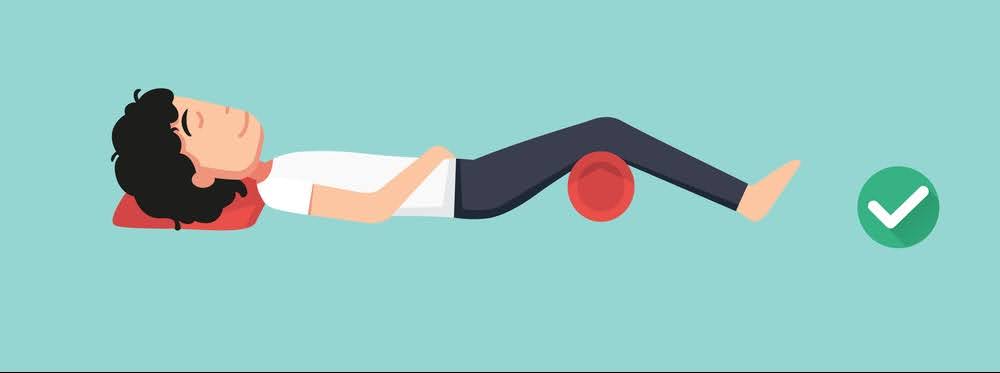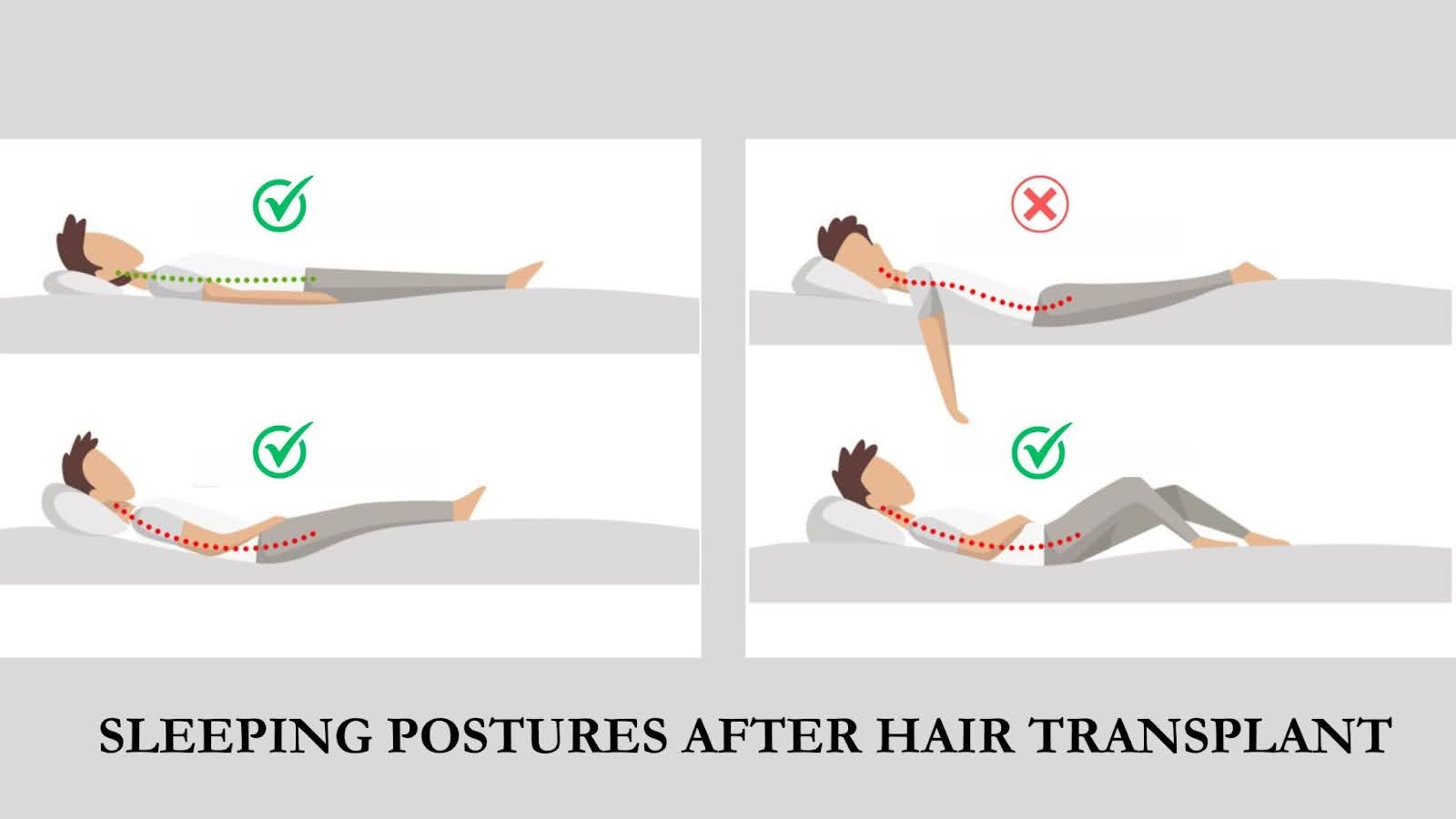Guide to Sleep After Hair Transplant for Optimal Healing and Results

How to Sleep After Hair Transplant?” is one of the major concerns for potential Hair Transplant patients. And Why Not? – Having an Adequate rest after hair transplant not only speeds up the healing process but also plays a crucial role in ensuring the success and longevity of your newly transplanted hair.
Know How?
Hair Transplant Surgery involves creating slits(tiny holes) at the donor and recipient sites. This is done to easily extract grafts from the donor site (usually from the back of the scalp) and implant them into the recipient site(area with no hair).
These holes are nothing but small wounds that take a standard amount of time to heal. However, due to the numbing effects of anesthesia, patients experience minimal discomfort both during and after the surgery. This minor pain will not be felt even after the effects of anesthesia are reduced until you surrender to sleep.
In this article, we will delve into doctor-approved ways and savvy sleep hacks that can help patients sleep normally after hair transplant. Stick with us till the end to ensure a smooth recovery if it’s trouble sleeping after hair transplant.
Sleeping Posture After Hair Transplant
The days after Hair Transplant you can sleep normally relies on how quickly the wounds recover. No doubt, these wounds will take some time, generally (3-4 days). But, still, it varies on the type of case and individual. The recovery can be accelerated if you know the right sleeping posture based on the Hair Transplant Technique you’ve undergone.
Explore the recommended hair transplant sleeping positions for different procedures below.

How to Sleep After FUE Hair Transplant?
In the FUE(Follicular Unit Extraction) method, where individual grafts are harvested, safeguard your investment by embracing the Supine Position(back-sleeping) strategy.
You can employ a soft bed and travel pillow to provide crucial support and prevent direct contact with the donor area. This ensures a conducive environment for graft healing.
For the initial days post-surgery, you can consider adopting a slightly elevated sleeping position.
The donor area post-FUE is meticulously dressed to not only shield against potential hair transplant infections but also to minimize friction during sleep. This careful covering serves a dual purpose—preventing direct contact with surfaces and alleviating discomfort.
How to Sleep After FUT Hair Transplant? –
In this procedure, a strip of skin is harvested. So after surgery, prioritize gentle sleep positioning. Opt for back sleeping, avoiding undue pressure on the suture line(Stitched area).
Elevating your head slightly aids in minimizing swelling, fostering an environment best for the healing process.
Occasionally, recliners emerge as the optimal choice, providing superior comfort and enhanced ease of handling, especially during the postoperative phase following FUT surgery.
Avoid constant repositioning of your head while sleeping.
How to Sleep After Crown Hair Transplant? –
Utilizing a travel pillow or cushioning for support is a must to enhance comfort and promote better healing.
Additionally, avoiding direct pressure on the transplanted area is essential for the grafts to settle effectively. Implementing these guidelines ensures a restful sleep and contributes to the overall success of your Crown Hair Transplant journey.
Routine Guidance
- Ensure optimal recovery post any Hair Transplant by avoiding frequent repositioning of your head during sleep.
- Protect your head from potential impact with hard surfaces, such as a wooden bed. Cover them with soft pillows to make a safe sleeping environment. This precaution minimizes the risk of injuries.
- Always aim to maintain a stable sleeping position, refraining from constant tossing and turning.
- Ensure ample lighting in your room to prevent inadvertent stumbling and touches.
These mindful practices contribute to a safer and more comfortable post-transplant recovery experience.”
Can You Sleep on a Pillow After Hair Transplant?
The question of whether one can sleep on a pillow emerges as a common concern. The best advice is to choose a supportive yet gentle pillow to minimize any potential pressure on the transplanted area.
Opting for a soft, hypoallergenic pillow with a silk or satin pillowcase is often recommended, as these materials are gentler on newly transplanted grafts and reduce friction.
It is advisable to avoid putting direct pressure on the recipient site to prevent dislodging or damaging the grafts. You can also use a soft travel or neck pillow to remain stable while you sleep.
Sleeping Pills After Hair Transplant
While sleep is vital for the recovery process, reliance on sleeping pills may have varying effects on different individuals and can potentially interfere with the body’s natural healing mechanisms.
It is strongly recommended to consult with your healthcare provider before considering any sleep pills, ensuring a personalized and safe approach to postoperative recovery.
The unique needs of each patient should be carefully assessed to strike a balance between ensuring restful sleep and promoting a healthy, complication-free recovery after a hair transplant.
Best Practices for Sleeping After Hair Transplant Surgery
- Refrain from sleeping flat on your stomach for at least five nights after surgery; adopt a back-sleeping posture to promote optimal healing.
- Use a soft pillow to ease pressure on the head, prevent sweating and irritation during the recovery period.
- Always maintain hygiene. Keep your bed, pillow cover, and sheets clean to ward off any kind of Hair Transplant Infections. You can use a soft towel as well. This will absorb sweating(if any).
- Minimize movements and refrain from rubbing or touching the transplant area during sleep.
The Consequences of Wrong Sleeping Posture and Hygiene After Hair Transplant
- Swelling and Increased Pain in Wounds: Incorrect sleeping positions may lead to heightened swelling and discomfort around the treated area.
- Misplacement of Grafts: The risk of graft displacement rises when proper sleeping postures are not observed.
- Elevated Risk of Hair Transplant Infections: Poor hygiene practices can increase the likelihood of infections, jeopardizing the success of the transplant.
- Slower Recovery and Healing: Incorrect postures and inadequate hygiene may impede the overall recovery process, delaying healing.
- Persistent Redness on the Scalp: Inappropriate sleeping positions and compromised hygiene may contribute to prolonged redness over the scalp, affecting the aesthetic outcome of the transplant.
When can you sleep normally after a hair transplant?
The specific duration may vary based on the individual’s healing progress and the transplant technique employed. It’s essential to follow the postoperative instructions provided by the surgeon diligently.
As a general guideline, patients are usually encouraged to gradually transition back to their normal sleeping positions after the first week or as advised by their healthcare provider.
Adapting a patient and cautious approach contributes significantly to the overall success rate of the hair transplant, ensuring that the newly transplanted grafts remain undisturbed and conducive to optimal growth.
Always consult with your surgeon for personalized advice tailored to your unique recovery journey.



